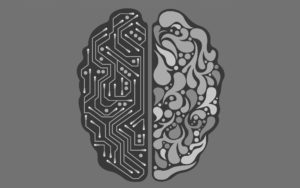Written by Suleiman Adamu; co-written by Jamilu Awwalu.
The Internet contains various categories of materials, some of which can be used as educational resources. These educational resources can be retrieved for content creation for use in Adaptive eLearning Systems (AES). Adaptive eLearning is a branch of eLearning that provides educational materials and resources based on the learners’ needs. The adaptive learning system is not limited to delivering materials in a personalised manner to the learner; it also adapts in terms of interaction with learners and maintains learners’ preferences.
Artificial Intelligence plays a key role in adaptive eLearning by providing a personalised learning experience. It plays an important role, specifically in the domains of ontology and knowledge retrieval, which are components of the main modules of the adaptive eLearning system. Retrieval and compilation of correct contents for an eLearning system is critical. The success of any such system is determined by the relevance of the learning materials to the needs of the learner.
 Unlike traditional learning systems, in which the instructor is responsible for the integrity of information passed on to the learners, the role Artificial Intelligence plays in knowledge retrieval cannot be seen as involving any type of responsibility for the information served to the learner. This is because algorithms are used for the knowledge retrieval, and, of course, the algorithms themselves cannot be “held responsible” for the information passed to learners; they merely serve the learners what they are programmed to retrieve.
Unlike traditional learning systems, in which the instructor is responsible for the integrity of information passed on to the learners, the role Artificial Intelligence plays in knowledge retrieval cannot be seen as involving any type of responsibility for the information served to the learner. This is because algorithms are used for the knowledge retrieval, and, of course, the algorithms themselves cannot be “held responsible” for the information passed to learners; they merely serve the learners what they are programmed to retrieve.
Although AES offers instructors the opportunity to author and engineer content, this endeavour is somewhat constrained by the fact that the AI-based AES must not be limited to particular resources or repositories because it is autonomous and intelligent enough to search, retrieve, and update its own knowledge base regularly. The risk involved here is that whereas human instructors can filter materials for obscene, derogative, and prohibited keywords as they engineer and compile content, the AES may not weed out such words.
This phenomenon is seen on social media, where such filtering has been enforced on obscene and derogative words. Of course, users routinely manoeuvre around the restrictions by replacing a letter or two with asterisks or exclamation marks, producing “words” such as sh!t and f*ck. For students whose medium of instruction is English but who are not familiar with sociolinguistic propriety, this can be a serious problem because they may make the mistake of considering such words “normal” and use them in a formal conversational or academic setting.
Such problematic words were used by Microsoft’s AI twitter chat bot, Tay, who even went on to claim Hitler was right and equate feminism with cancer.
Despite the risks involved in AI/AES content formulation, a well designed and implemented AES offers a variety of opportunities to both students and teachers. Students benefit from, for example, adaptive presentation in terms of sequencing and navigation-support preferences, peer help, and collaborative learning, as well as learning by practice. Another benefit for students is the explanation facility AI offers on how a correct answer is arrived at and what the learner actually missed or didn’t do correctly. This goes beyond what is available on traditional learning management systems (LMSs), in which the correct answer is shown without giving the learner the opportunity to query how that answer was arrived at and exactly what the learner missed. Furthermore, AI gives adaptive eLearning systems a wider reach in regard to learning materials, as well as multilingual versions of the same knowledge content, obviating the need for translation on the part of the learner.
As technology grows, most of the current risks associated with AI/AES would certainly be reduced or eliminated because they constitute areas of research interest for AI specialists, who are currently looking into them and how they can be solved.
The more technology pervades our lives, the more frequently risks associated with it are identified. It is certain that today’s challenges and risks will not persist in coming years. Of course, we will be confronted to new problematics, pushing the research community to explore how these, too, can be solved.
You can hear more about Artificial Intelligence at the eLearning Africa Conference taking place from September 26 – 28, in Kigali, Rwanda. Suleiman Adamu will be part of the Panel: “How is Technology Driving Transformation in Universities?”, on Thursday, 27 September, 11:45 – 13:00.


















